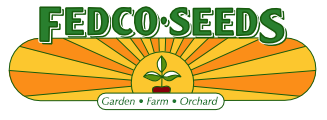Seed Saving for Beginners
Why Save Seeds?
| Vegetable | Cycle | Pollination | Pollinator | Isolation Distance |
Seed Longevity | Notes |
|---|---|---|---|---|---|---|
| Bean | A |
Self |
100' |
2-3 yrs |
Lose vigor rapidly. | |
| Soybean | A |
Self |
100' |
2-3 yrs |
Space farther apart than for market crops. | |
| Beet/Chard | B |
Cross |
Wind |
1/2 mi |
3-5 yrs |
Beets cross with chards. |
| Broccoli/Kale/ Cauliflower |
B |
Cross |
Insects |
1/2 mi |
3-5 yrs |
Hot-water treated seeds last only 1 yr. Crossing among brassica species is complex, consult a good reference book. |
| Carrot | B |
Cross |
Insects |
1500' |
2-3 yrs |
Crosses with wild species. |
| Celery | B |
Cross |
Insects |
1500' |
2-3 yrs |
|
| Corn | A |
Cross |
Wind |
1/2 mi |
2-3 yrs |
Adequate population essential. |
| Cucumber | A |
Cross |
Insects |
1500' |
5-10 yrs |
Harvest at yellow blimp stage. |
| Eggplant | A |
Self |
150' |
2-3 yrs |
||
| Leek | B |
Cross |
Insects |
1500' |
2 yrs |
|
| Onion | B |
Cross |
Insects |
1500' |
1 yr |
|
| Lettuce | A |
Self |
50' |
2-3 yrs |
Start indoors, need long season for seed. | |
| Melon | A |
Cross |
Insects |
1500' |
5-10 yrs |
Muskmelons will not cross with watermelons. |
| Mustard | A |
Cross |
Insects |
1/2 mi |
3-5 yrs |
Crosses with wild species. |
| Pea | A |
Self |
50' |
2-3 yrs |
Do not save seed from diseased plants. | |
| Pepper | A |
both |
Insects |
500' |
2-3 yrs |
Some varieties cross more readily than others. |
| Radish | A |
Cross |
Insects |
1500' |
3-5 yrs |
|
| Spinach | A |
Cross |
Wind |
1/2 mi |
2-3 yrs |
|
| Squash/Pumpkin | A |
Cross |
Insects |
1500' |
2-5 yrs |
moschata 2-3 yrs, pepo & maxima 3-5 yrs. These three species generally do not cross. |
| Tomato | A |
Self |
25'-100' |
5-10 yrs |
Potato-leaf types need the greater isolation distance. | |
| Cycle: A=annual,
B=biennial. Pollination: Self=self-pollinated, Cross=cross-pollinated by another plant. Isolation Distance: recommended distance by which different varieties must be separated to prevent unwanted cross-pollination. Seed Longevity: Averages, not guarantees. Seed longevity depends on the conditions under which the crop was grown and how the seeds have been stored. Minimum Populations: Crossers require minimum populations to maintain vigor and avoid inbreeding depression. Recommended minumums number of plants: 25 cucumbers, squash, melons; 50-100 radishes, brassicas, mustards; 200 sweet corn. |
||||||
Basic Definitions
Open-pollinated varieties produce seed true to type if they are allowed to cross-pollinate only with other plants of the same variety. If they cross with other varieties of the same species, their seed will not be true.
Hybrid varieties are those produced from the crossing of two different inbred lines. Seed saved from hybrid varieties will not breed true in the next generation.
Amongst open-pollinated plants, self-pollinated (selfers) usually reproduce by using their own pollen. Crossers usually reproduce through the transfer of pollen from one plant to a different plant of the same species.
Botanical nomenclature goes from the general to the specific. Plants are classified into kinds by genus, species, and variety. In Cucurbita pepo Sweet Dumpling, Cucurbita is the genus, pepo is the species and Sweet Dumpling is the variety.
Seed Storage
Keep your seed alive by storing it properly! Humidity and heat are the enemies of seed longevity. Humidity causes the quickest deterioration. Ideal moisture content for most seed is no more than 10-12% so store at low relative humidity. Optimum storage is in a sealed jar in a freezer or refrigerator. Failing that, the sum of temperature plus relative humidity where seed is kept should never exceed 100.
• Never store seed in a humid, warm or sunny spot.
• Don’t ever leave it in a greenhouse or hoophouse for even a few hours.
Most seed stored properly will last for several years. A few seeds are good for one year only, such as onions, parsnips, parsley, chives, shiso, scorzonera, Batavian endive, licorice, pennyroyal, St Johnswort, liatris, delphinium, larkspur, perennial phlox, and any seed that has been pelleted or hot-water treated. If in doubt, try germinating a sample of old seed in moist paper towels.
Seed Longevity for Herbs and Flowers
This information was hard to find. We have integrated results from several tables with our own first-hand knowledge drawn from testing old lots for germination. Seeds stored in less than ideal conditions will have shorter life spans. Plant name is followed by years.
| plant | years |
|---|---|
| achillea | 2 |
| acroclinium | 3 |
| alyssum | 3 |
| amaranth | 3-5 |
| anise | 3 |
| aster | 1 |
| baby's breath | 2 |
| bachelor's button | 3 |
| basil | 5+ |
| borage | 5+ |
| calendula | 3 |
| campanula | 3 |
| candytuft | 2 |
| caraway | 3 |
| catnip | 5 |
| celosia | 3-5 |
| chinese lantern | 1 |
| chives | 1 |
| chrysanthemum | 3 |
| cilantro | 5+ |
| clarkia | 2 |
| columbine | 2 |
| coreopsis | 2 |
| cosmos | 3-5 |
| plant | years |
|---|---|
| dahlia | 2 |
| daisy | 3 |
| delphinium | 1 |
| dianthus | 3 |
| didiscus | 3 |
| digitalis | 2 |
| dill | 3 |
| fennel | 3 |
| four o'clock | 2 |
| gaillardia | 2 |
| hollyhock | 3 |
| honesty | 2 |
| impatiens | 2 |
| larkspur | 1 |
| lavatera | 3-5 |
| lavender | 5 |
| lemon balm | 5 |
| lobelia | 3 |
| lupine | 2 |
| marigold | 3 |
| marjoram | 3 |
| nasturtium | 3-5 |
| nicotiana | 3 |
| nigella | 1 |
| plant | years |
|---|---|
| oregano | 2 |
| pansy | 2 |
| penstemon | 2 |
| petunia (unpelleted) | 5 |
| phlox | 1 |
| poppy | 3 |
| portulaca | 3 |
| rue | 2 |
| sage | 3 |
| salpiglossis | 3-5 |
| salvia | 1 |
| savory | 3 |
| scabiosa | 3 |
| snapdragon | 3 |
| statice | 2 |
| stock | 3 |
| strawflower | 2 |
| sweet pea | 3 |
| sunflower | 3 |
| thyme | 3 |
| tithonia | 2 |
| zinnia | 3-5 |

